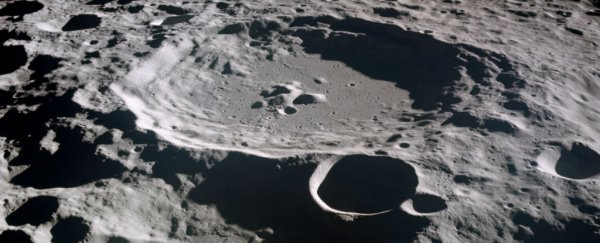The next time you stare up at the Moon in awe and wonder on a cloudless night, consider this: the gravitational pull of our green and blue planet is shifting the surface of the little rock that orbits around us.
Based on observations recorded by the NASA Lunar Reconnaissance Orbiter (LRO), scientists think Earth's pull is influencing the cracking of the surface of the Moon. Some 3,000 cracks have been found over the last five years - most less than 10 kilometres (or 6.2 miles) long - and these cracks were originally caused by the Moon shrinking as its liquid core cools and solidifies.
On its own, such shrinkage would result in a random distribution of cracks - but that's not what the researchers discovered. "There is a pattern in the orientations of the thousands of faults, and it suggests something else is influencing their formation, something that's also acting on a global scale," lead researcher and Smithsonian scientist, John Watters, said in a press release. "That something is the Earth's gravitational pull."
Just as the Moon affects Earth's tide, so too does Earth create stresses in the rock on the lunar surface - a kind of push and pull that we see on our planet as tectonic plate shifting. On the Moon, it results in 'fault scarps' being created, and as Earth swings closer and further away, these scarps are created in a recognisable pattern. Only in the past five years has there been enough data to work with to see this pattern emerge.
"Early on in the mission we suspected that tidal forces played a role in the formation of tectonic features, but we just did not have enough coverage to make any conclusive statements," says Arizona State University's Mark Robinson, another member of the team. "The discovery of so many previously undetected tectonic features as our LROC high-resolution image coverage continues to grow is truly remarkable."
The scientists believe these faults are still young and still forming, and suggest peak crystal stresses are reached when the Moon is furthest from Earth - that would cause shallow moonquakes if the cracks were still actively being formed at that time. If it became possible to get a lunar seismic sensor network in place, the hypothesis could be tested.
For now, it's a reminder of the close relationship we have with our nearest cosmic neighbour; in the future it might help us to avoid moonquakes on a lunar space station.
